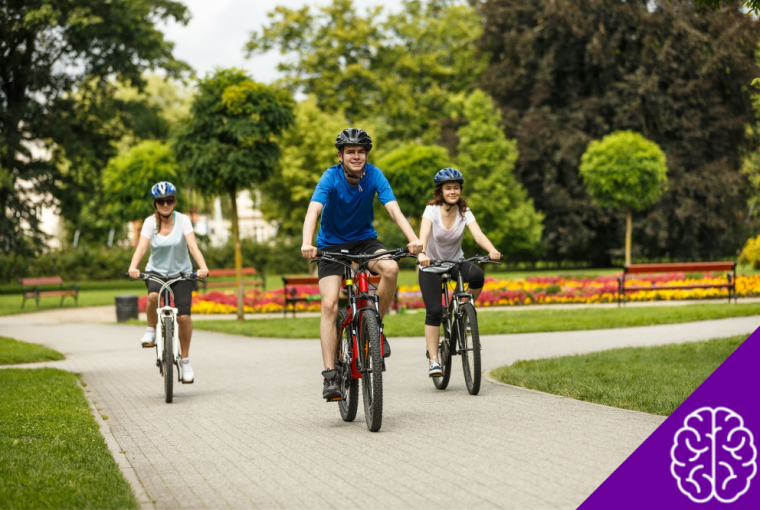Riding a bike is one of life’s simplest pleasures—whether you’re cruising down the local park trail, commuting to work, or tackling rugged dirt tracks. But what if some of your bike habits are, well, a bit bizarre? Don’t worry, you’re not alone. Many cyclists unknowingly do strange and sometimes funny things with their bikes, from quirky rituals to outright odd practices.
And yes, some of these habits could even be harming your bike or your rides, without you realizing it. In this post, we’ll explore the strange, quirky, and often unintentional things people do with their bicycles—and what you can do to fix (or stop) them for a smoother, safer ride.
1. Using the Wrong Chain Lubricant
Believe it or not, some cyclists end up lubricating their chains with all kinds of things—WD-40, motor oil, or even cooking oil. While it may seem like any lubricant will do the job, using the wrong one can harm both your bike and your ride quality.
Why it’s strange
These unconventional lubricants are not designed for the wear-and-tear of bike chains. WD-40, for instance, is a degreaser, not a lubricant, and cooking oil lacks the viscosity needed for a chain under tension.
What to do instead
Stick to bicycle-specific chain lubricants suited for your riding conditions. Use dry lubricants for dusty environments and wet lubricants for wet or muddy rides. A properly lubricated chain ensures smooth shifting, prevents rust, and extends the life of your drivetrain.
2. Rinsing Your Bike Down Like a Car
Another common odd habit is washing a bike like you’d wash a car—dousing it with a high-pressure hose. It feels thorough, right? Well, it’s actually doing more harm than good.
Why it’s strange
High-pressure water can blast grime into the moving parts of your bike, like the hubs, bottom bracket, and headset, damaging bearings and reducing their lifespan.
What to do instead
Use a gentle approach when cleaning your bike. A bucket of water, a sponge, and a soft brush work wonders. If you must use a hose, keep the pressure low and avoid spraying directly at delicate components.
3. Storing Your Bike Outdoors—Under a Tarp
Some riders think parking their bikes outside and covering them with a tarp is enough to protect them from the elements. While the thought is appreciated, it’s not as helpful as it sounds.
Why it’s strange
Humidity can build up under the tarp, accelerating rust and corrosion. Plus, outdoor conditions like wind, microdust, or small animals could still damage the bike.
What to do instead
If space is an issue and storing your bike indoors isn’t an option, consider investing in a weatherproof bike cover designed to allow air circulation. This minimizes moisture damage while shielding your bike from harsh weather.
4. Riding With Too Much Stuff on Your Bike
We’ve all been there—loading up your bike with a heavy bag on the handlebars, strapping extra water bottles wherever they fit, maybe even attaching a bag so stuffed it looks like you’re moving house.
Why it’s strange
Overloading your bike, or distributing the weight unevenly, can make your ride unbalanced and increase wear on certain components, such as tires or spokes. It also makes steering unpredictable, which can be dangerous.
What to do instead
Use proper bike racks, panniers, or frame packs to distribute weight evenly. Think minimalist when packing—carry only what you truly need for your ride. Staying light and balanced leads to safer and more enjoyable biking.
5. Adjusting Bike Components While Riding
Do you find yourself tweaking your seat height, handlebars, or brakes mid-ride? It may feel productive, but it’s also unsafe and unwise.
Why it’s strange
Trying to make adjustments while riding not only puts you at risk of losing control but can also lead to improper fixes.
What to do instead
Always adjust your bike before hitting the road. Take a few minutes to ensure your seat, handlebars, and other components are properly aligned. If adjustments are needed mid-ride, stop in a safe spot to fix them.
6. Forgetting Regular Maintenance
This might not sound strange at first, but hear us out. Riding a bike regularly without giving it proper checkups is like driving a car for years without an oil change—it’ll catch up to you eventually.
Why it’s strange
Many cyclists adopt a “set it and forget it” approach to their bikes, riding for months without checking tire pressure, chain wear, or brake pads.
What to do instead
Commit to a simple maintenance routine. Check your tire pressure before every ride, clean and lube your chain every couple of weeks, and inspect your brakes regularly. Scheduling a professional tune-up every few months is also a great idea to keep your bike in top shape.
7. Ignoring Noises From Your Bike
Clicks, creaks, and squeaks are often dismissed by riders as quirks of their bike. But these sounds are your bike’s way of communicating that something’s off.
Why it’s strange
Ignoring such noises could mean running your bike into potential breakdowns—like a loose bolt, worn-out bearings, or a poorly adjusted chain.
What to do instead
Pay attention to unusual sounds and investigate their source. If you’re unsure, take your bike to a mechanic for a quick diagnosis and fix—the sooner, the better.
8. Carrying Your Bike in the Weirdest Ways
Whether it’s slinging the bike over one shoulder or awkwardly pushing it with one hand, most of us have been guilty of carrying our bikes in, well, less-than-efficient ways.
Why it’s strange
Improperly carrying your bike can strain your body and put unnecessary stress on the bike’s components.
What to do instead
Learn the correct way to carry your bike. For shorter carry distances, hold the top tube with one hand while balancing the bike. For longer distances, rest the bike on your shoulder by placing the top tube gently across it.
Make Every Ride Count
It’s surprising how many quirky (and sometimes harmful) things we do with our bikes without realizing it. By being more mindful of these habits and adjusting accordingly, you’ll ensure that your bike rides remain smooth, safe, and enjoyable—not to mention extend the life of your trusty two-wheeler.


